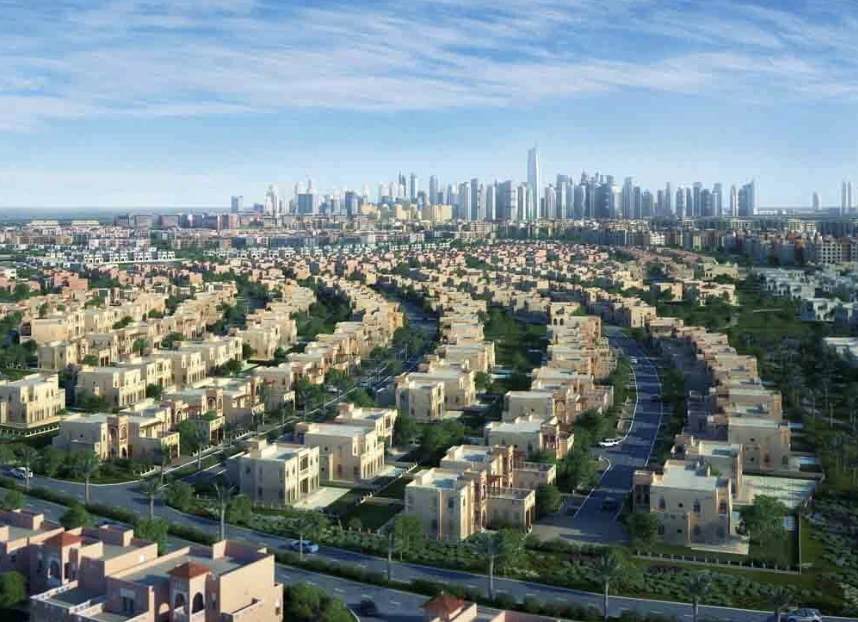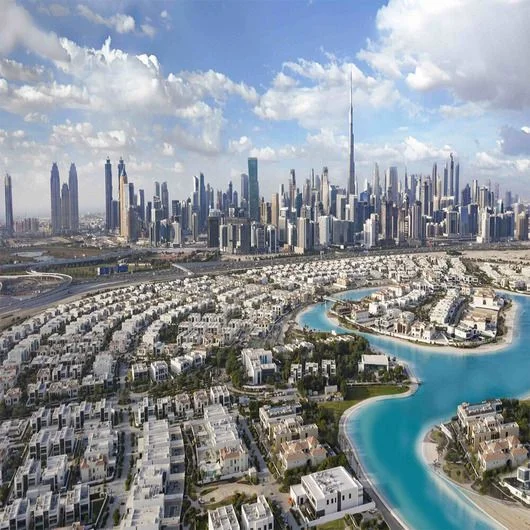Many investors regard the real estate industry as appealing because of it’s consistent income and potential for long-term growth. However, because there are so many alternatives, selecting the best location can prove to be difficult. Majority of the time, investors focus on the United Kingdom and the United Arab Emirates, especially Dubai. Both UK and UAE have strengths that are quite significant while creating a real estate portfolio. In this blog, we’ll shed light on the different market dynamics, regulations and potential returns.
Market dynamics:
The UK real estate market is more developed and well-established, boasting a strong history of producing substantial profits when demand regularly surpasses supply. The UK home Price Index, which indicates that the average home prices rose by 10.8% annually in December 2022, reflects this stability. It’s an ideal option for long-term investors searching for a safe spot to store their money due to its dependability. The UK has an extensive range of property types, spanning from residential to commercial, including buy-to-let apartments and student housing, which contributes to its great diversity.
Dubai, however, has a younger and livelier market. It’s phenomenal development in the early years of the new century was fueled for large-scale infrastructural projects and spike in foreign investment. Larger returns might arise from this with certain regions seeing double-digit increases. The first nine months of 2023 saw a notable surge in the real estate market in Dubai. In comparison to the same period in 2022, the year saw a significant 36.7% increase in transaction value and a noteworthy 33.8% rise in the total number of transaction.
Rental yields: cash flow determinants
Rental revenue is a crucial component for buy-to-let investors! With an average rental return of 3.53% across the country, the UK offers respectable rental yields. Still, returns in a few locations like Manchester and Liverpool are nearly 5.5% higher. These regional differences present chances for investors who delve further into certain areas.
In the United Arab Emirates, particularly in the regions of Dubai and Abu Dhabi, the total return on rent is still competitive. While stronger areas like Dubai Marina, Downtown Dubai, and Jumeirah Village Circle may see rental rates as high as 9%, the average rental yield in Dubai is often between 5% and 7%. In Abu Dhabi, rental yields are particularly high; investors may expect returns of 7 to 8% in the city’s new CBDs, such Saadiyat Island and Al Reem Island.
Taxation:
Tax implications can have a significant impact on an investment’s profitability. Under the traditional tax system in the UK, capital gains tax rates range from 10% to 18%. This pricing is not advantageous for those who invest in real estate. Your refunds may be lowered by these taxes.
On the contrary , real estate investors might claim tax haven status in Dubai. Because there are no income taxes, property taxes, or capital gains taxes, it is quite alluring from a tax perspective. Think of Dubai as a tax haven where you may potentially increase the value of your investments.
The ultimate decision:
The “better” investment location ultimately depends on your risk tolerance and individual investing goals.
Investors seeking a stable, long-term expanding economy with strong legal protections will find sanctuary in the UK. It’s a low-risk, low-maintenance option for investors that prioritize security over large returns.
Investors who are comfortable in a more dynamic market and seek strong rental yields, tax benefits, and the potential for rapid capital development can choose Dubai. It’s a high-risk, high-reward opportunity for people who can tolerate certain fluctuations in exchange for potentially exponential growth.
Call 800-ANAX or visit ANAX Developments website to check ouf off-plan project, in the heart of Dubai — Vento Tower.


